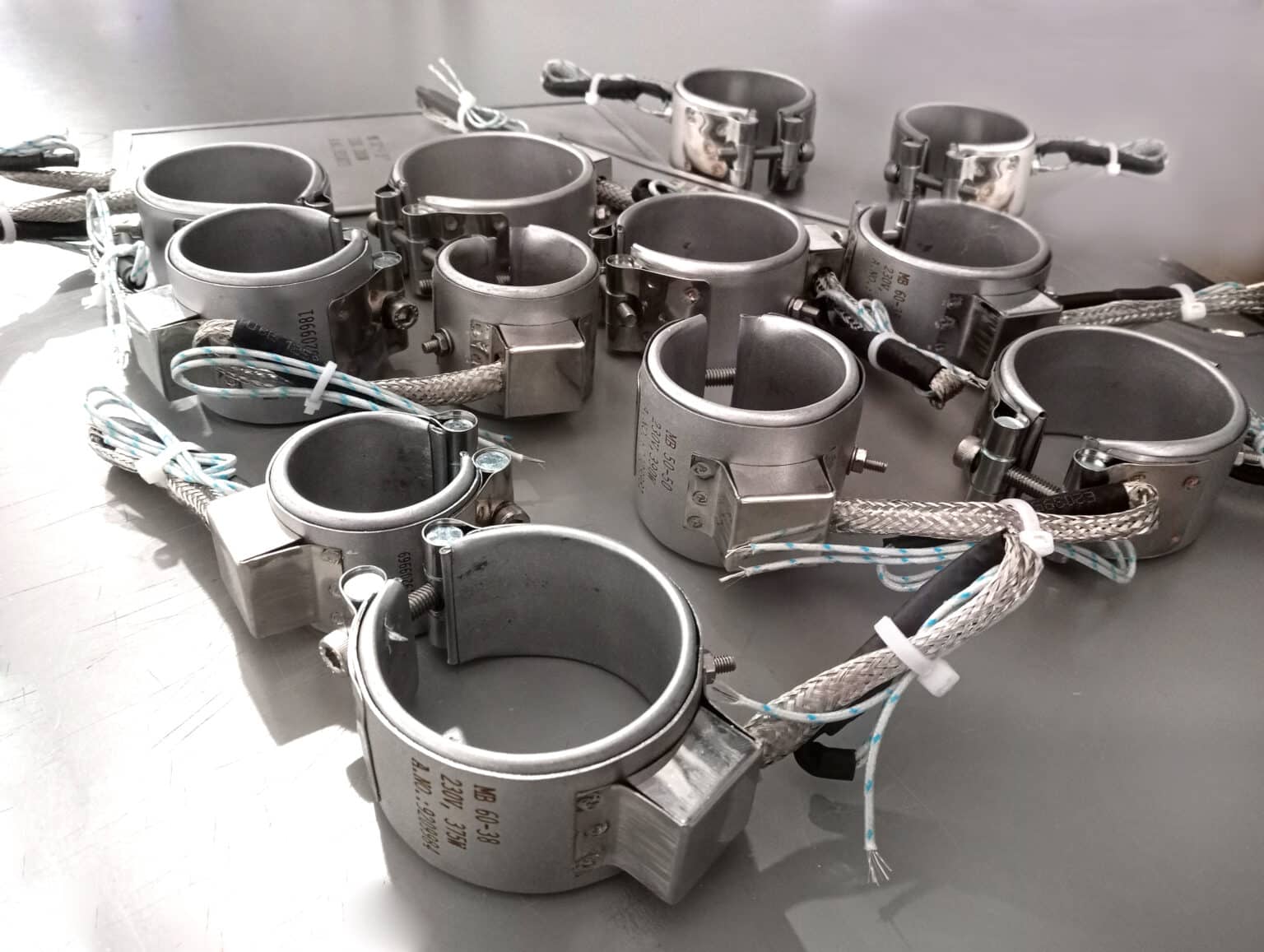
What are Mica Band Heaters?
Mica band heaters offer efficient and economical solutions for heating cylindrical surfaces that require external indirect heating. They are the ideal solution for high-watt density and high-temperature applications. It uses a nickel chromium resistance strip as a heating element, which is precisely wound on a dielectric material for even heat distribution. The heating element is insulated within a mica core enclosed in a metal sheath, which provides exceptional insulation, dielectric strength, and heat transfer capability for faster heat-up and longer heater life. Heaters can incorporate various sized holes and cut-outs and are customizable for various dimensions, wattages, voltages, and materials to suit different applications requirements.
Construction
1. SS/Aluminised Sheath
2. Mica Insulation
3. Clamping Band
4. Nickel Chromium Resistance Strip
5. Terminal Box
6. Lead Protection
7. Stainless steel screw terminals
Benefits for Industrial Applications
Plastics Industry:
In the plastics industry, Mica band heaters play a crucial role in maintaining consistent temperatures during injection molding processes. By providing uniform heat distribution, these heaters help ensure the quality and precision of molded products, leading to improved production efficiency and product consistency.
Packaging Industry:
Mica band heaters are essential in the packaging industry for heat sealing applications. Their ability to deliver controlled and uniform heating is vital for sealing packaging materials effectively, ensuring product integrity and security during storage and transportation.
Food Industry:
In the food industry, Mica band heaters are utilized in food processing equipment for controlled heating. These heaters help maintain precise temperatures required for various food processing applications, contributing to food safety and quality standards. Their reliability and efficiency make them a valuable heating solution in food production processes.
Installation and Maintenance Ease:
The user-friendly design of Mica band heaters simplifies installation and reduces maintenance efforts, offering operational benefits to industries. Easy installation enables swift integration of the heaters into existing systems, minimizing setup time and ensuring quick deployment. Additionally, the reduced maintenance requirements of Mica band heaters help in minimizing downtime and operational disruptions, allowing businesses to maintain continuous production cycles and optimize efficiency.
Environmental Impact and Sustainability:
Mica band heaters not only offer operational benefits but also contribute to environmental sustainability. Their energy-efficient performance, coupled with precise heat distribution, reduces energy consumption and carbon emissions, aligning with sustainable practices. By promoting energy efficiency and minimizing waste, Mica band heaters support industries in their efforts to reduce their carbon footprint and adopt eco-friendly heating solutions, contributing to a more sustainable future.
Applications
Band heaters are generally used to deliver heat around a pipe, tube, cylindrical vessel, as well as flat surfaces. Moreover, mica band heaters are commonly used in applications that necessitates a lower temperature. Furthermore, it can also tolerate some bending, resist water as well as chemicals and can withstand mechanical vibrations.
The ability to implement holes and cutouts, various termination styles, and clamping options are all possible. As a result, mica-insulated band heaters are widely utilized in wide range of applications, particularly plastics. The mica band heater can be used for a number of applications, including:
- Blow Molding Machines
- Drum Heating
- Extrusion Die
- Plastic Extruders
- Plastic Injection Molding Machines
- Paper Processing Equipment
- Food Processing Industries.
- External Tank and Vessel Heating.
- Blown Film Dies.